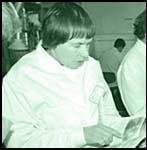



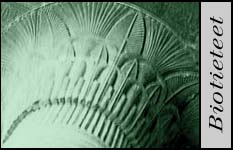
WOMEN OF LEARNING: NAME INDEX | DISCIPLINES | PERIODS | FIRSTS | THE INVISIBLE
LANDMARKS | FACTS | WOMEN'S STUDIES | FRONT PAGE

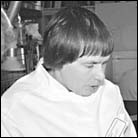 |
MIRJA SALKINOJA-SALONEN expert on environmental toxins 1940- |
||
Academy Professor Mirja Salkinoja-Salonen is an internationally acclaimed expert on environmental toxins. She recalls how she became interested in the subject in the 1950's: "Around 1955, Valkeakoski Library acquired the Finnish translation of Microbe Hunters (Mikrobien metsästäjät) by the Dutchman Paul de Kruif. That book must have had a tremendous subconscious effect on me, for, as a student, I applied for a laboratory traineeship in the Netherlands and nowhere else, although other countries were also available After having analysed sand and clay at a concrete and tile factory laboratory in Geldermalsen for some time, I transferred to the huge (over 2000 employees) laboratory of Shell Chemicals in Amsterdam in 1960. At that time, the Rhine foamed so badly that bubbles would cover cars on the bridges crossing the river. The City Water Works was faced with the desperate task of turning this bubble bath into drinking water. The Shell management assigned to my department, headed by Dr. A.C. van der Linden (son of the inventor of the pesticide lindane) the task of finding out why the carbon chains in the synthetic washing agents sold by the company did not break down but went on foaming long after being released from washing machines into the sewers. The research results were a success. We were thrilled to have solved the mystery in a couple of months: three- or four-branched hydrocarbon chains were not microbially degradable. Shell immediately switched over to producing linear or two-branched hydrocarbon chains. It all happened with amazing speed, in less than a year." In the 1970's, Salkinoja-Salonen embarked on a research career in Finland and focussed on the wood-processing industry, and more specifically, on the biodegradability of chlorinated compounds (chlorine bleaching of paper pulp, use of chlorophenol in the wood-processing industry, chlorination of drinking water). She found clear proof of which chlorinated compounds were microbially degradable and which were not. Industry was quick to respond to these research results: the production of chlorophenol was discontinued in 1984, and in 1991 chlorine was eliminated from the bleaching process of pulp. "Had someone predicted this in the 1970's, I wouldn't have believed it. The hardest part was not convincing the industry, but the authorities..." In the 1990's Salkinoja-Salonen started studying microbially made toxins found in indoor building materials, feeds and foods. Her research group at the University of Helsinki has discovered a new, dangerous bacterial genera, mitochondriotoxins, that speed up ageing in the human body. A great challenge is to find out how these toxins and the microbes producing them can be controlled. 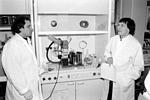 1 1
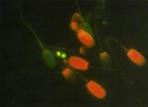 2 2
1 Researcher Raimo Mikkola and professor Mirja Salkinoja-Salonen at a vacuum concentrator, separating toxins from bacteria that have caused food poisoning. Photo: Olli Oinas 2 Bacillus licheniformis bacterium, that was found in baby food, has destroyed the cell membranes of spermatozoa, seen as red in the photo. The bacterium has probably caused serious food poisonings. Spermatozoa from a pig are particularly suitable for use as indicator cells for a toxicity test. Fat-soluble toxins penetrate the cell membranes of spermatozoa well because of low cholesterol levels of the latter. Mirja Salkinoja's research project |
|||